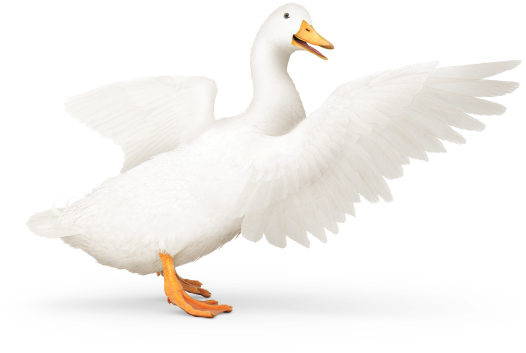At first glance, it may seem like life insurance and AD&D (accidental death and dismemberment) insurance are mostly the same, but this isn’t the case. Typically, beneficiaries receive life insurance benefits no matter what the policyholder’s cause of death is. There may be some exceptions, but these are usually clearly stated within the terms of the policy. On the other hand, AD&D insurance is designed to pay benefits for accidental deaths and dismemberments only.
Another important difference is that life insurance (whether term life or whole life) is an independent, standalone policy. AD&D insurance, on the other hand, can be offered as either a standalone policy or as a rider to a life insurance policy.1 Read on to learn more about the differences between life insurance and AD&D insurance.
Table of Contents
Life insurance is a contract between an insurer and a policyholder that gives your beneficiaries access to a sum of money if you die while the policy is in force. While people may get life insurance for a variety of reasons, it’s typically to ensure that their family or dependents have added financial security after they pass.
The policy’s exact terms may differ based on the life insurance company and plan type you choose. For example, term life insurance offers coverage for a fixed period, usually 10 to 30 years. Meanwhile, whole life insurance offers lifelong coverage with a guaranteed death benefit.2
At the time of purchasing a policy, you can name at least one beneficiary. If you keep up with premiums and pass away while the policy is in force, your beneficiaries can file an insurance claim and receive the death benefit payout.
Accidental death and dismemberment insurance pays out a death benefit if the insured party has passed away in an accident or experienced a specified injury. AD&D insurance can be a standalone policy or a rider.
AD&D policies have a few restrictions worth considering. For instance, they may not cover injuries or deaths associated with extreme sports. Refer to the policy for a complete list of limitations and exclusions.
The benefit of AD&D insurance is that it can provide a benefit for people who suffer serious injuries. In these cases, life insurance may not provide any benefit.
Not certain which policy is right for you? These key differences between AD&D insurance and life insurance may help you better understand which policy is best suited to your needs:
Accidental death and dismemberment coverage is a cost effective choice, although your premium depends on a number of factors. That said, term life insurance can be an economical choice for most young people, while other types of life insurance, such as a whole life policy, may be more costly.
Term life insurance usually lasts 10 to 30 years, while permanent life insurance provides coverage until you pass away as long as premiums are paid. AD&D insurance falls within the first category – you pay for coverage for a fixed period of time and can continue to renew the policy once the term ends.3
It’s important to understand that coverage varies significantly for AD&D insurance policies. Each insurer will have a list of covered accidents and exclusions that may not be covered. In instances of injury or dismemberment, you may only be eligible for part of the payout. With life insurance, a death benefit is guaranteed in all but a few specific scenarios.

Don’t wait until it’s too late. Help cover yourself and your family with coverage from Aflac.
Get StartedSome life insurance companies allow you to add accidental death and dismemberment coverage to your traditional life insurance policy through a rider. This rider increases the death benefit if you pass away in an accident that is covered by the rider. You may also be eligible for a portion of the payout if you experience a covered injury. If the policyholder dies in an accident, the beneficiary may receive payouts from both the main life insurance policy and the rider. This is called double indemnity.4
By getting both life insurance and AD&D insurance, you can increase the payout loved ones receive in the event of accidental death. Aflac allows you to supplement your life insurance coverage with an accidental-death benefit rider.
Aflac offers term and whole life insurance with an accidental-death benefit rider, which offers benefits that many policyholders are seeking. This rider pays out a lump sum benefit in the event of an accidental death that occurs as a result of an injury sustained in a covered accident. Many people may consider accidental death coverage a must, especially those who drive often or use public transportation. If this sounds like you, consider chatting with an agent and getting a quote today.
Get Started
Review all the major differences between term and whole life insurance, including costs, coverage, pros & cons.

Supplemental life insurance provides additional coverage for you and your family. Find out how it works and what types of supplemental life insurance plans are available.
1 ValuePenguin - What's Accidental Death & Dismemberment Insurance (AD&D)? Updated April 25, 2025. Accessed June 5, 2025. https://www.valuepenguin.com/life-insurance/accidental-death-dismemberment-insurance.
2 Investopedia - Life Insurance: What It Is, How It Works, and How To Buy a Policy. Updated May 8, 2025. Accessed June 5, 2025. https://www.investopedia.com/terms/l/lifeinsurance.asp.
3 Bankrate - Accidental death & dismemberment (AD&D) insurance. Updated October 24, 2024. Accessed June 5, 2025. https://www.bankrate.com/insurance/life-insurance/accidental-death-and-dismemberment/#what-is-accidental-death-dismemberment-insurance.
4 Investopedia - Accidental Death and Dismemberment (AD&D) Insurance. Updated September 20, 2024. Accessed June 5, 2025. https://www.investopedia.com/terms/a/accidental-death-dismemberment-insurance.asp.
Content within this article is provided for general informational purposes and is not provided as tax, legal, health, or financial advice for any person or for any specific situation. Employers, employees, and other individuals should contact their own advisers about their situations. For complete details, including availability and costs of Aflac insurance, please contact your local Aflac agent.
Aflac coverage is underwritten by American Family Life Assurance Company of Columbus. In New York, Aflac coverage is underwritten by American Family Life Assurance Company of New York.
Aflac life plans – A68000 series: Term Life Policies: In Arkansas, Idaho, Oklahoma, Oregon, Texas, Pennsylvania & Virginia, Policies: ICC1368200, ICC1368300, ICC1368400. In Delaware, Policies A68200, A68300 & A68400. In New York, Policies NY68200, NY68300 and NY68400. Whole Life Policies: In Arkansas, Idaho, Oklahoma, Oregon, Texas, Pennsylvania & Virginia, Policies: ICC1368100. In Delaware, Policy A68100. In New York, Policy NYR68100. B60000 series: In Arkansas, Oklahoma & Virginia, Policies: ICC18B60C10, ICC18B60100, ICC18B60200, ICC18B60300, & ICC18B60400. Not available in Delaware. Q60000 series/Whole: In Arkansas & Delaware, Policy Q60100M. In Idaho, Policy Q60100MID. In Oklahoma, Policy Q60100MOK. Not available in Virginia. Q60000 series/Term: In Delaware, Policies Q60200CM. In Arkansas, Idaho, Oklahoma, Policies ICC18Q60200C, ICC18Q60300C, ICC18Q60400C. Not available in Virginia.
Receipt of accelerated death benefits may affect eligibility for public assistance programs. Benefits may also be taxable, and are not expected to receive the same favorable tax treatment as other types of accelerated death benefits that may be available.
Aflac Final Expense insurance coverage is underwritten by Tier One Insurance Company, a subsidiary of Aflac Incorporated and is administered by Aetna Life Insurance Company. Tier One Insurance Company is part of the Aflac family of insurers. In California, Tier One Insurance Company does business as Tier One Life Insurance Company (NAIC 92908).
In AR, DE, ID, OK and VA: Policies ICC21-AFLLBL21 and ICC21-AFLRPL21; and Riders ICC21-AFLABR22, ICC21-AFLADB22, and ICC21-AFLCDR22. Aflac Final Expense policies are not available in New York. Coverage may not be available in all states, including but not limited to DE, ID, NJ, NM, NY, VA or VT.
Benefits/premium rates may vary based on state and plan levels. Optional riders may be available at an additional cost. Policies and riders may also contain a waiting period. Refer to the exact policy and rider forms for benefit details, definitions, limitations, and exclusions.
Aflac WWHQ | Tier One | 1932 Wynnton Road | Columbus, GA 31999
Aflac New York | 22 Corporate Woods Boulevard, Suite 2 | Albany, NY 12211
Z2300489R2
EXP 7/26